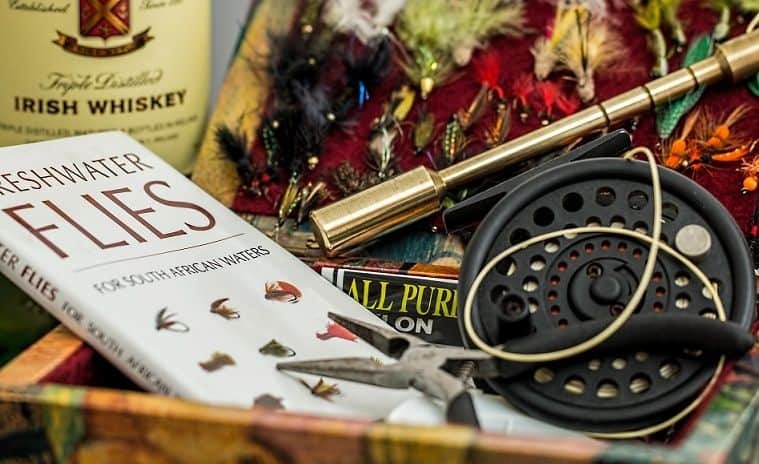How To Choose the Right Fly Fishing Gears
Before you start thinking about what gear to buy, you’ll first need to determine what kind of fish you’d like to target, and where you’re going to fish for them.
Determine the Fish Species
Fly fishing gear can be relatively specialized depending on the fish you’d like to catch. Many times a basic outfit will get you started in the right direction. Then as your experience grows, and you make the decision to target bigger fish, or simply want to upgrade your gear, you’ll slowly add to your equipment list.
Starting out with trout, pan fish, or bass is a good idea. You’ll find these species in nearly every corner of the U.S. and they are all relatively easy to fly fish for. These fish require a simple floating line, a basic fly rod and reel, some leader, tippet, and a few flies. You won’t need to be an expert, and with a little patience, some backyard casting practice and a little luck, you’ll be catching fish in no time. Remember you weren’t smashing 300 yard drives in golf, or skiing double black diamond runs on your first day out. It may take a few trips to catch a fish, but I guarantee you that if you stick with it, you’ll find yourself happier than a pig in slop!
Choose the Appropriate Gear/Equipments
After you’ve done a little bit of research and have an idea of what kind of fish you would like to catch, you are ready to get some equipment. Use this chart to begin getting an idea of the gear you’ll need to get started. The most important column you’ll need to pay attention to is Rod / Line Weight. The lower the weight designation, the smaller the fish, the higher the designation the larger and heavier the fish.
In short, the gear you choose to fish for Rainbow Trout is going to be very different from what you would use for Tarpon. A trout rod will simply not have enough backbone to handle a 100-pound Tarpon. Conversely, a Tarpon rod would be total overkill on a poor little trout. In short, never bring a gun to a knife fight, or a knife to a gunfight!
|
Species |
Rod / Line Weight |
Water Type |
Fish Size |
|---|---|---|---|
|
Small Trout Pan Fish |
3wt – 4wt |
Small Creeks Ponds |
6″ to 12″ |
|
Medium Trout Pan Fish |
4wt – 6wt |
Medium Creeks Rivers Ponds & Lakes Saltwater |
10″-18″ |
|
Large Trout Bass |
5wt – 8wt |
Med – Lg Rivers |
16″-20+” |
|
Summer Steelhead |
7wt – 8wt |
Spey Med – Lg Rivers Med – Lg Lakes |
20″-30+” |
|
Winter Steelhead Salmon |
8wt – 9wt Spey |
Med – Lg Rivers Saltwater |
10 lbs – 20 lbs |
|
SW Bone Fish Permit Red Fish |
8wt – 10wt |
SW Flats Beaches Ocean |
8 lbs – 20 lbs |
|
SW Tarpon Tuna Billfish |
10wt – 14wt |
Ocean |
20lbs – 150 lbs |
As you begin your fly fishing career, keep in mind that you can target just about anything that swims with a fly these days. Anglers are travelling the world these days with their fly rods in the hopes of catching far off exotic species. Many times the equipment you buy will crossover into a multitude of different applications, but sometimes more specialized gear is called for. In any case, figure out where and what you’re going to target and then match the gear to the scenario.
Guides and Gazetteers
Local fly fishing guide books are a great place to start. There are plenty of publications that will highlight various fisheries for your particular area. These books will give you details about the local seen, including boat launches, lodging, public access, fly pattern recommendations, and popular areas. Use the guides in conjunction with an up-to-date gazetteer. These map books will show you very detailed information on dirt roads, public access, locked gates, parks, national forests, and even footpaths and trails. These books when used in conjunction make a great tool to get you on your way.
Explore!
Exploring your surroundings and getting yourself lost is all part of the fun! I’ve found some of my most cherished fishing spots on days when I drove six hours and didn’t even wet a line. It’s a necessary and crucial component to finding fish, especially when you’re new. Sometimes the trick to finding a good fishing spot means pointing your finger to a blue line on a map and going for it! You’ll find the most popular fly fishing locations relatively easily, it’s the secret honey hole spots that can provide you with solitude and awesome fishing. Be sure to check the local regulations pamphlet that will accompany your license, as it will also give you an idea of what species are available in your area.
A good general rule of thumb for finding fish is: Walk 15 minutes further than anyone else, and fish away from the road! If you do this, you will increase your chances of catching fish by 50%, guaranteed!


